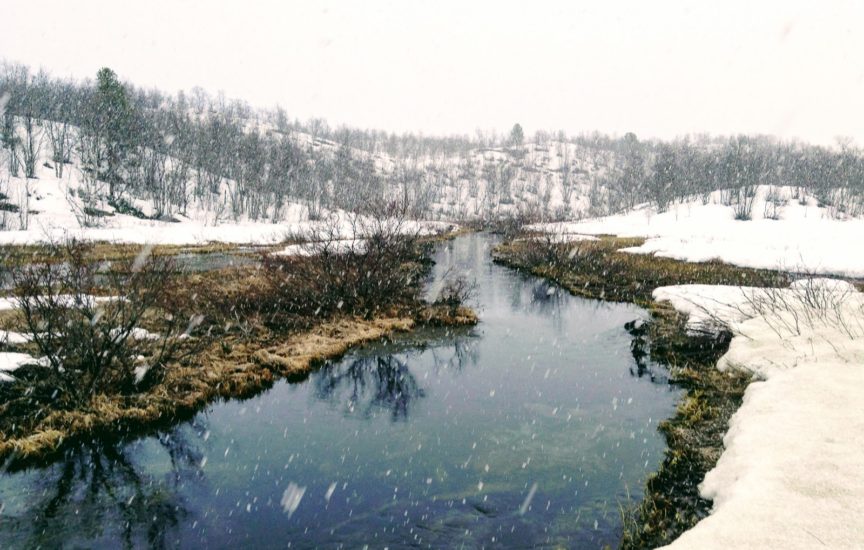Realm of Sáivu

 You are Reading..
You are Reading..
Realm of Sáivu
Sáivu can refer to many things. One of them is Sáivu as a another realm. The Sáivu-world is full of abundance and is much bigger and better than this world/dimension.
We would say the realm of sáivu means the hidden spirit world where different beings and spirits reside.
In Sáivu you can meet beings like “gods”, ulda, háldi, mermaids, little people, ancerstors and totem animals. The people there are called Sáivo-olbmak – “Sáivu-people.”
In the realm of Sáivu the ancestors do the same activities as we do on earth. They have a better version of this world, because everyone lives a good life.
Writings (for example here) say that saajve-vaerieh and “bassi-várit” “Sáivu-mountains” are holy mountains that Sáivu-people live in. We choose to interpret this as these mountains are entrances/openings to the realm of Sáivu.
Northern sami: Sáivu, Sáiva, Sávja
Julevsami – Sájvva
Southern Sami – Saajve
Sáivu -lakes
The other thing it can mean is a type of lake that usually has no inlet or outlet and is considered to have a double bottom. In other words there is a hidden lake underneath the visible lake with a hidden world. A lake with a hidden lake underneath is something very mysterious, so its natural to connect it with paralell realities/universe/worlds.
“Siedi” (offering rock) close to Saivo-lakes are often used.
In a shamanic journey it is possible to use a Sáivu – lake as a tunnel/portal into the spirit world. For example during a drum journey the person can imagine diving into a water like this.
There are many lakes in Sápmi with the name Sáivo or Sáiva. In these lakes the fish are remarkably fat and good.
Close to where Jungle grew up there is one:
“My grandfather was the only one who used to fish in this lake on regular basis during his life. He was a shaman, and knew when the fish were residing in the upper lake and the lower lake. This had to do with the moon phases. I was too young to remember the exact moon phase for good fishing unfortunately. However I have been fishing with a fishing-rod many times in that lake. Sometimes it seems completely dead, and sometimes it´s an impressive abundance of fish. After my grandfather died a relative of mine took a boat there and put some nets out, but concluded there was no point in fishing there and gave up. “
His grandmother has short a story about a Swedish man who came and searched for the entrance to the lower lake in one of the Sáivo lakes in the area. According to the story he found it and started to block the entrance with rocks. His grandmother thought this was very silly.
Close to Karasjok, where Elin grew up, there is a Sáivu pond. It is a spring and pond called Suttesaja on the Finnish side (meaning the Finnish side of the border. More about Sápmi here.)
This pond doesnt freeze in wintertime, even if temperatures can get down to -50 celsius. Thats because there is one, or several springs that rise the temperature in the water.
“The stream comes from the mountain and runs down to form a big pound. The water there is considered holy, because it is is so pure and clean. The stories tell that uldá/gufihtar live under this pond, and thats why it never freezes. “
Some years ago a big water company had plans to build a factory in this site and sell the water from it commercially. Fortunately the locals demonstrated against this and they managed to make the the spring a protected area. Read more about it here. Now there is a sign put on on the site so that everyone that visits will know that this is a holy site for the Sami people.
In 2003 a couple from Karasjok made a naming-seremony for their child on the site of Suttesaja instead of a baptise. The child was given the water to drink. The mother stated: “We are people of the nature. Why should we do our ceremonies inside 4 walls? ”
Almost all children in Karasjok that are baptised in church. An article in norwegian is here.
Resources:
About realm of Sáivu: http://www.saivu.com/web/index.php?sladja=88&giella1=eng
About Suttesaja : https://www.culturalsurvival.org/news/sacred-spring-saamiland-threatened-water-prospecting-plans
About the naming-ceremony in Suttesaja: https://www.nrk.no/kultur/tilbake-til-naturen-1.904673

The Elms Richmond Ave South
Dartry
Hi thank you for that information.So interesting.
It is similar to Irish traditions with water where certain wells were seen as openings to the underworld and the land if the sidhe or land of youth and beauty.
Why did people go to offering sites?When they had problems or health issues?What offerings did they leave?Do people still go now?
These special mountains lakes and places really hold such a beautiful strong clear energy and need to be protected and respected.
Hello Rosaleen!
I doesnt surprise us that it is similar to the Irish traditions. Its really interesting though, and very nice to know we have so much in common. People went to offering sites for different reasons, for hunting and good fortune, and with different gifts like fish and renindeer. In the sami traditions its usually more about being friends with the “gods”, not necasserily whorship them. And, yes we still have offering sites that people go to still now, and offer different things. It is alot to tell here on this comment sections, but we will soon write a blogpost about this. We have so much we want to write about! Thank you for following the blog! <3